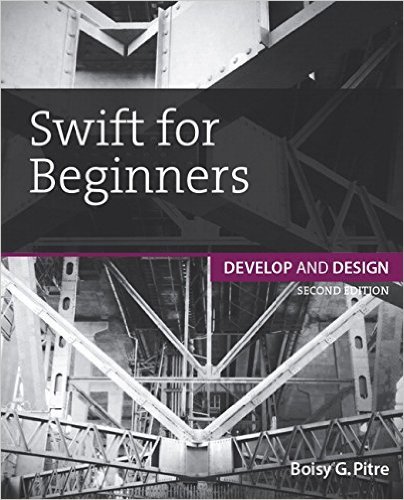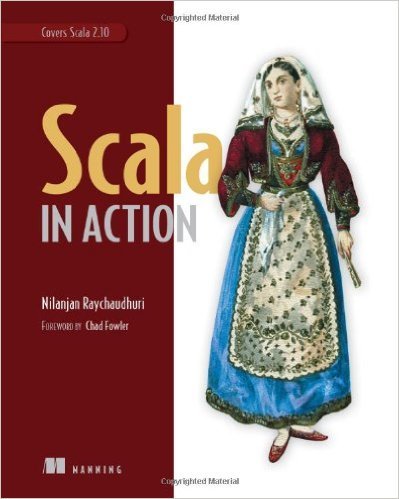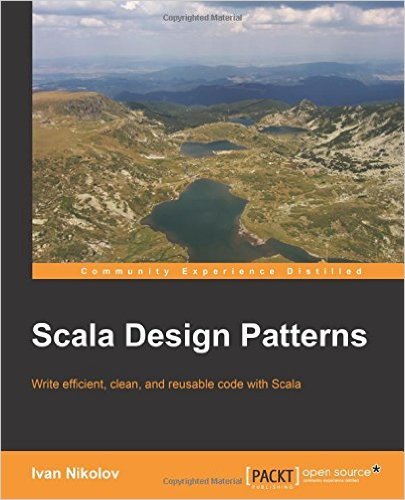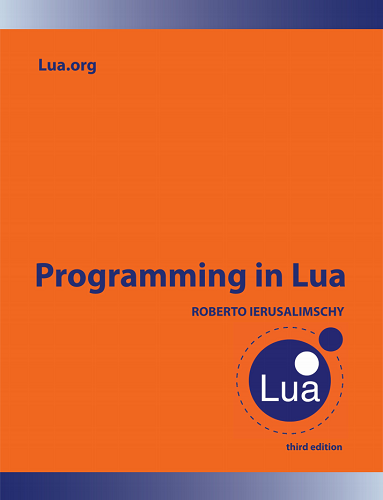What to read about promising programming languages

Let's start with important information: not necessarily promising languages are new. They are not as old as your favorite Python or Ruby, they are not in any of the top ten popular ratings ( GitHut , RedMonk , TIOBE Index ), and knowledge of these languages does not yet give a significant salary increase (except, perhaps, Swift) . But it is also impossible to call them a revolution, which is gaining momentum among the elect. Of course, they have their own niche, a certain market share (up to 2%) and the existing community. It’s just that in the future, they can encroach on the top 5 laurels, unless a black swan event happens.
In recent years, little has changed in the ratings of the popularity of languages - some fall, others rise, but no one breaks into the top under the slogan "the best of the best." The process of capturing new territories for the language most often takes years, and during this time the necessary development base has been formed. Therefore, there will be no exclusives and unique languages written for yesterday evening in the review - simply because their time has not yet come. But in the coming years, the popularity of unshakable pillars, such as Java (all), JavaScript or PHP, will decline, and “beginners” will gradually take their place.
Swift
Programmer Chris Lattner has been working secretly on his own programming language since 2010. About a year and a half after the development began, other programmers joined in, but it took another year before Apple, which Lattner works, focused on the project.
')
In 2014, Apple introduced Swift's OOP language, which should replace Objective-C, aided by the ability to translate any application written in Objective-C to the new language. Swift, designed primarily for iOS and OS X developers, is considered a safer and faster language than Objective-C.
What to read now

The best book on the language is the official publication from Apple - " Swift for Programmers ". Books by renowned teachers and programmers Harvey Deitel and Paul Deytel do not need a special presentation - they are famous for their easy presentation of material of any complexity. Swift for Programmers contains many examples of real programs that will help you learn the basics of creating your own applications. An updated version of the book was published a year ago.

The book Swift for Beginners: Develop and Design , published in 2014, not only talks about the basics of Swift, but also introduces the Xcode framework. The publication is suitable for anyone who has at least a minimum of knowledge about programming in any high-level language and wants to learn how to create programs for iOS, OS X or watchOS.
However, despite all the updates, the books are inevitably outdated due to changes in the language. You can fight this in many ways: for example, to know in advance which current books on the language will be published soon.
What to read in the future

In the Swift 2 Cookbook , there are more than 50 recipes that will help you create applications in Swift 2. The tutorial describes the basics of installing Xcode and provides examples of updating the code from Swift 1.2 to Swift 2.0 using Xcode, and also demonstrates how Xcode helps test the code. It will be useful to have some initial ideas about Objective-C or Swift, but it is possible to study the material presented in this book without prior knowledge of Swift. The book will be released in April of this year.
Scala
Scala is a powerful multi-paradigm programming language designed for safe and fast programming. Functional programming features are fully supported in Scala. He is a representative of the academic environment, for which he is sometimes accused of being too complicated. The language was created in 2001-2004. in one of the most prestigious educational institutions in Europe - in the Federal Polytechnic School of Lausanne. Scala is the result of research aimed at developing improved language support for component software.
Today, Scala is used in many large projects — for example, most of the Twitter server code is written in this language. Scala can replace Java, due to the fact that it takes into account many of the mistakes made in the design of Java.
What to read now

Martin Oderski, author of the book Programming in Scala: A Comprehensive Step-by-Step Guide, 2nd Edition , is the creator of the Scala language. In addition, he developed support for generic programming in Java (Generics) and created the current version of javac, the Java compiler.
Translated from the Italian "scala" means "ladder". The book from Oderski is definitely reminiscent of climbing a ladder: step by step, you will learn Scala, starting with the basic elements and ending with additional features of the language.
You may also find the Scala in Depth book (by Joshua D. Suereth) useful. Of course, in many aspects it is already outdated, but if you are going to study patterns and algorithms, you can count on the relevance of the materials.

Scala in Action 1st Edition is a more recent tutorial (2013). It contains a good overview of the tools that extend the capabilities of the language. MongoDB , SBT , Scalaz , Squeryl , H2 , jQuery UI , ScalaCheck , Specs , Akka , Lift , DSLs are described and disassembled in detail.
What to read in the future

“ Scala High Performance Programming ” is, according to the authors, the first book that explores the potential of Scala to create high-performance applications. The publication will be useful to Scala developers who know Lift, as well as Java programmers who are interested in switching to Scala, but do not want to abandon the performance of Java code.
The release of the book is scheduled for June.

Scala Design Patterns is another book for Scala programmers that will help you use your accumulated knowledge to create applications in real life - a kind of quick reference guide. The book examines the possibility of applying well-known design pattern standards in the industry, specifying when exactly the chosen template is to be used and when something more appropriate should be sought.
Lua
Lua is a scripting language developed back in 1993 by members of the Catholic University of Rio de Janeiro. Lua's capabilities are closer to JavaScript, but it is distinguished by more powerful and flexible constructions. He became known as the programming language of many games (including World of Warcraft), but can be used not only for games, but also where it is necessary to use data stored in other files.
Lua is one of the most powerful scripting languages in the world. It is used in projects such as Redis, nginx, Tarantool, OpenRes.
What to read now

Read the classics. Programming in Lua (3rd edition) is a book written by one of the creators of the language Roberto Ieruzalimsky. For game developers, publishing can be a reference book. It covers almost all aspects of using Lua, including the necessary skills for interacting with C.
One of the easiest ways to learn Lua can be found at this link: Learn Lua in 15 Minutes .
What to read in the future

Unfortunately, there are no interesting announcements for the near future. A relatively new (compared to other editions) book was published in 2015 - “ Lua Game Development Cookbook ”. A novice game developer in this book will be useful to explore the concept of simple 2D games, and then move on to modern 3D projects. In addition, the ability to create scripts in the Lua language will give you complete control over the game.
However, this book is not for beginners in Lua - you will need knowledge of the language, and to create custom Lua modules you need C / C ++.
Go
Robert Grizmer, Rob Pike, and Ken Thompson created Go in 2007–2009. The language was created with an eye to solving the problems of large-scale software development. Go should have made the development process more efficient. Unlike more academic programming languages, Go tried to remove all unnecessary. Due to the brevity and simplicity of the language to study it will be quite simple.
Go applications are varied. So, push notifications in VKontakte is implemented in the Go language . On Go, you can write applications for iOS and Android, and even create your own cryptocurrency . In general, where exactly to use Go, you decide for yourself, especially since you can study it without a good knowledge of the English language - there are many translations and a good selection of articles in the Hub Hub .
What to read now

One of the authors of this book, Brian Kernigan, is a true programming legend. He is one of the co-authors of Unix, the creator of many programs under Unix, including ditroff and cron, the author of "The C Programming Language", written with Dennis Richie in 1978.
At the moment, “ The Go Programming Language ” is the most interesting Go language textbook. At least some basic knowledge of JavaScript, Ruby, Python, Java or C ++ will help you learn this language. The book contains hundreds of real examples of Go code, covering all the nuances of the language, the most important libraries, and also demonstrating a wide range of language uses.
What to read in the future

Sau Sheong Chang, author of Go Web Programming , has written Ruby on Rails Web Mashup Projects, Cloning Internet Applications with Ruby and several other significant Ruby books. The more interesting it will be to find out why the director of laboratory and applied research at HP Labs in Singapore began writing projects on Go after Ruby. Go Web Programming addresses the issue of creating a web application in Go using modern design principles. The release is scheduled for May 31.
Rusty
Rust is a multi-paradigm, functional, imperative-procedural, object-oriented programming language, developed since 2006. Since 2009, Mozilla Research has been working on Rust.
Rust combines the performance and security of compiled languages (C ++, not inferior in its capabilities) with the speed of developing dynamic languages (Python), while retaining a certain level of asceticism. Thanks to the actions of a large and open developer community, Rust has corrected many of the mistakes made when designing C ++ and Java.
What to read now
Rust continues to change rapidly. Lagging behind in training materials for several months can put your knowledge at risk. It is imperative to familiarize yourself with the official documentation - with the manual (also known as the book "The Rust Programming Language") and with other documentation .
What to read in the future

Jim Blandy, the author of Programming Rust , the main GNT Emacs and GNU Guile, talks about the unique advantages of Rust. This book presents examples of clear and cost-effective programming that avoids a large number of common mistakes.

In December of this year, the book “ Learning Rust ” will be released, which will allow C # / C ++ developers to get better performance and memory management. The book demonstrates the capabilities of Rust in the development of large and scalable software, as well as the basics of the language, including variables, procedures, memory management, etc. After reading this book, you can create complex applications in Rust.
Instead of conclusion
The process of changing the paradigm is so slow that you can start preparing for the inevitable right now, without waiting for your favorite programming language to become completely obsolete. Nobody will forget about C ++ tomorrow, but it is necessary to move forward and learn new things now. The advantages of the languages we have chosen are that they can actually be used in today's projects, not limited to dry theory. You can try one of the promising languages yourself and not be disappointed in the result.
Source: https://habr.com/ru/post/279193/
All Articles